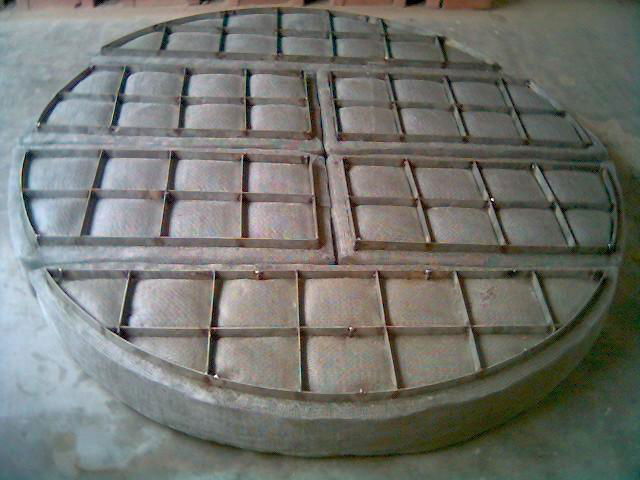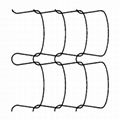| Model: | HQ-152639 |
|---|---|
| Brand: | HongQi |
| Origin: | Made In China |
| Category: | Metallurgy , Mining & Energy / Metallurgy & Mining / Wire Mesh |
| Label: | wire mesh demister , demister , wire mesh |
| Price: |
¥1000
/ pc
|
| Min. Order: | 10 pc |
Product Description
The principle of wire-mesh demister
The diameter of the separated drops in the gas which comes out in the ordinary chemical industry operation is about 0.1~5000μm. The separation of drops which have the diameter of above 100μm can be solved easily, for the sedimentation speed of such drops is relatively high. The drops which have the diameter above 50μm can be separated by gravitational settling method, the ones which have the diameter above 5μm can be separated by inertial impaction and centrifuge method; the smaller ones should be congregated to become lager, or be separated by using fiber filter and static demister.

wire-mesh demister(or mist eliminator)is mainly used to separate drops of the diameter between 3μm to 5μm, the operating principle is showed in the fig at the right side. When the gas with liquid drops rises at a certain speed, passing through the wire mesh on the grid bar, the inertia of the rising drops make them collide with the wire and then adhere to the surface of the wire. The drops on the wire will diffuse and subside. It makes the drops form bigger ones and then flow along the wire to the intertexture of the wire. Because the wire can be humidified, and because of the surface tension of liquid and the capillarity effect of the wire, the drops will become bigger and bigger. They will be separated and fall when their own weight exceed the resultant force of buoyancy of the rising gas and surface tension of liquid. They will flow to the device of the container in the backward position. As long as the speed of the gas is properly controlled and with other proper condition, the efficiency of foam remove will be as high as 97% after the gas pass through wire-mesh demister. The purpose of removing foam will be achieved completely.
Member Information
| Anping Hongqi Metal Wire Mesh Product Co.,Ltd | |
|---|---|
| Country/Region: | He Bei - China |
| Business Nature: | Manufacturer |
| Phone: | 12135711 |
| Contact: | Amanda Song (sales manager) |
| Last Online: | 25 Mar, 2010 |








